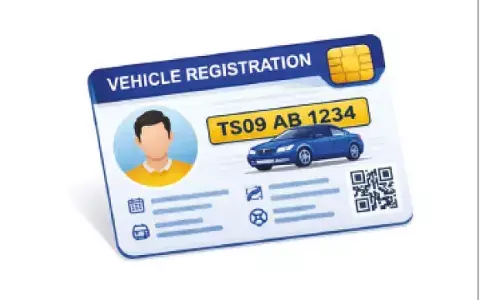Gamification in higher education

Opportunities and Challenges
The future of gamification in higher education holds vast promise, giving a means to enhance student interest, motivation, and learning results. When applied carefully and aligned with educational goals, gamification has the potential to create exciting and satisfying learning experiences that prepare students for the modern world. However, successfully accepting gamification requires a fair approach that respects its potential and challenges
In higher education, gamification has become a potent tool for influencing students’ engagement with and learning of course material. The appeal of gamification comes from its ability to tap into the natural human need for challenge, success, and social praise. Games are meant to be addictive by nature; they draw players in with clearly stated goals, instant input, and a feeling of advancement. This incredible ability may be used in the classroom to make learning more fun, effective, and satisfying.
Over the last ten years, gamification has slowly gained traction in higher education as more institutions adopt game-like elements to enhance student engagement and learning results. Forecasting to hit $11.94 billion by 2021, the global gamification business underscores the growing popularity of this approach in many different areas, including education.
A prime example of successful gamification in education is the Quest to Learn school in New York. In order to provide immersive and interesting learning experiences, the school offers a unique approach to incorporating game design principles into its curriculum. Traditional subjects are turned into interactive quests where students work together to solve challenges and put what they’ve learned to use in real-world situations. As an alternative to a traditional history lesson, students could go on a mission to “save” a historical era by figuring out riddles and finishing tasks pertaining to significant occasions and personalities. This method has improved student interest and engagement while also encouraging the growth of their critical thinking, problem-solving, and collaborative abilities. This success demonstrates the potential of gamification to revolutionize education and prepare students for the complexities of the modern world.
Incorporating points, badges, leaderboards, and other game elements helps teachers create exciting and immersive learning experiences that enthral their students and encourage active involvement in the classroom. With over 200 million games played in classes internationally in 2020, a significant number of which were engaged in higher education settings, current trends suggest that gaming is becoming more popular in colleges and universities. As a trend, esteemed Indian schools such as the Indian Institutes of Technology (IITs) are increasingly exploring gamification to improve learning results and student engagement. This adoption opens widespreadopportunities for educational institutions to innovate their teaching strategies and customise student experiences to better fit their requirements. Today, educators may combine gamification with other cutting-edge technology to create even more dynamic and engaging learning environments, it also opens the door for multidisciplinary collaboration.
Opportunities for Gamification in Higher Education Enhanced Motivation:
Game elements can motivate students by making learning more enjoyable and rewarding. The addition of challenges and social recognition taps into the natural human desire that drives engagement and learning. This can help students persist in facing problems and draw pleasure from the learning process.
Personalized Learning Paths:
Gamification can support individual learning paths, allowing students to move at their own pace and receive quick feedback on their performance.
This freedom ensures that students are appropriately challenged and adjust to diverse learning styles and abilities. Instant feedback through gamified tests helps students quickly spot areas for improvement, allowing them to change their strategies and deepen their knowledge.
Development of Soft Skills:
Gamification can also help develop soft skills like teamwork, problem-solving, and critical thinking.
By adding collaborative parts or challenging students to handle difficult problems, gaming supports the development of these important skills, which are highly sought after by companies in the modern workforce.
Challenges of Gamification inHigher Education Technical and Logistical Challenges:
Integrating games into current higher education systems can be complex and resource intensive. Implementing gamified learning settings requires educators, IT workers, and instructional designers to coordinate. The related costs can also be a significant barrier for some institutions.
Risks of Overemphasizing Game Elements:
There is a risk of focusing too much on game elements at the cost of educational quality. If gaming is not carefully planned and aligned with learning goals, it can become a mere trick, distracting students from the core subject and weakening the educational experience.
Diverse Student Responses:
Different student demographics may react differently to gamified methods. While some students may grow in a gamified setting, others may find it difficult or demotivating. Educators must respond to these individual differences to ensure gaming is accepted effectively.
Sustainability and Burnout Concerns:
The long-term feasibility of gamified methods is a worry, as prolonged exposure may lead to student burnout. Overreliance on external rewards can weaken internal drive, leading students to lose sight of the core value of learning.
Assessing Gamified Learning Outcomes:
Evaluating the learning effects of gamified techniques can be difficult, as normal evaluation methods may not catch the details of the gamified experience. Educators must develop new evaluation methods to correctly measure the impact of gaming on student learning and participation.
Emerging technologies like virtual reality, augmented reality, and artificial intelligence can further enhance gamification in higher education. VR and AR can create exciting, three-dimensional learning settings, while AI can personalize the gamified experience based on individual student needs and performance.
The future of gamification in higher education holds vast promise, giving a means to enhance student interest, motivation, and learning results. When applied carefully and aligned with educational goals, gamification has the potential to create exciting and satisfying learning experiences that prepare students for the modern world. However, successfully accepting gamification requires a fair approach that respects its potential and challenges.
As pedagogical methods continue to change, we expect to see a smoother addition of gamification concepts to the larger educational setting. This may involve developing new assessment methods and finding ways to align games with curriculum and teaching practices.Educators and policymakers must study this method carefully, leveraging new tools and adapting pedagogical techniques to ensure the benefits of gamification are realized to their best potential. By doing so, they can open new opportunities for student progress and add to the current transformation in higher education.
(The author is Co-Founder and Vice President of Strategic Alliances, Edverse)




















